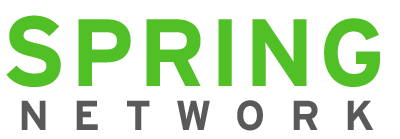WEARABLES and ORGANIZATION
By Stu Winby - April 2015
First wave computing started out over 50 years ago when companies began managing their operations via mainframe computer systems. Then computing got "personal" in the 1980s and '90s with the introduction of the PC. In what we like to call in the Silicon Valley “computing’s second wave,” mobile computing and the smartphone took center stage.
In January of 2007 when Apple CEO Steve Jobs debuted the iPhone and said “this will change everything” he was right. Eight years later the iPhone is now the 21st century defining technology. Smartphone(s) have penetrated every aspect of life. Now, here comes computing’s third wave, where embedded, intuitive computing in our homes, cars, stores, farms, and factories have the ability to think, sense, understand, and respond to our needs.
Given computing will increasingly impact almost everything, what is the impact on organization? More specifically, how will mobile devices and now wearables impact organization design?
Visualize the workplace just like how you think about using a fit-bit or Apple watch. A good place to start is to consider the transformation happening in healthcare. In healthcare, these new wearable tools are considered part of the “quantified self” movement. They raise consumer understanding of their health status in real time, aided by the growing availability of personalized apps and wearable sensors. Data from these devices link with big data and the consumer’s physician based “smart teams.” This personalized data is then used by the team to further engage the consumer/patient to improve their health and well-being.
Similar to the quantified-self movement in healthcare, we are entering a “quantified-work” wave in organization design. Devices, like smart phones, will allow teams of employees to work more efficiently and cohesively compared with today. Teams using quantified work apps will collaborate by setting project goals, including each other’s goals, obtain real-time, measurable feedback on individual and team progress-to-goals and be able to adjust workflow based on one another’s performance.
Work performance will become transparent. Transparency should lead to leaders who will empower team members, similar to physician smart teams where the objective is to help people become healthier. In the work place the leadership objective becomes sharing information and decision making, building skills, and structuring rewards in order to enable individuals and teams to collaborate and perform effectively.
These new quantified-work apps will enable work to become more self-organizing, agile, and adaptive. Work can easily be organized through iterations and re-configured based on learning from the previous iteration. Wearables will help with things like “inferred check-ins” to minimize the friction of capturing metrics while people work. The technology will provide measurement feedback consistent with what we know about high performing teams. These new quantified-work apps are now being piloted in Silicon Valley, most prominently at Google Twitter and Intel.
Many emerging quantified-work apps were leveraged from the gaming industry. Gaming is the “new normal” for user experience. It has shown that people enjoy quantitative interfaces and feedback. Just as it seems to work for ESPN and CNN, where numbers and simple dashboards are used, it will probably work for wearables. Numbers are a new kind of surface that can convey meaning and emotion in a blink of an eye. This is good news for the Apple watch that has a small visual screen with a single small line of streaming text. It will likely be also good for the employee using metrics to adjust in a dynamic work environment.
Organization design is essentially designing for optimal information processing. The designer wants to build-in the capacity for people to easily problem-solve, make decisions, and spot/eliminate work variances to best accomplish goals. Technology has decentralized information processing. . In the unstructured world, like we have now, everything is decentralized. Workers who have grown up with social media and digital experiences don’t want information to come from the top down. They prefer information to flow peer-to-peer.
This is especially so in the technology-rich environment of Silicon Valley, where peer-peer employees routinely negotiate for greater “ownership.” The challenge for businesses is to architect a peer-to-peer environment where knowledge workers seek to own their projects and goals. The challenge for organizational designers is placing the hierarchical structures in the background, leaving networks of high performing work units to occupy the foreground. A modular organization works better with a peer to peer workplace, and should be the designer choice.
In healthcare, based on what we know about wearables, the organization design task is beyond the individual and wearable device. For example, social networks are designed to encourage “life logging” and behavior change. In contrast, physician-based smart teams represent a totally new work configuration for healthcare. Multifunctional teams are designed around customer segments, just like designers have previously done in front-back organizational models.
Another role for organization is in the app software design. Broader user requirements are explored to encompass organizational issues. This “socio-technical approach” insures better fit with the user, and also the health care organization. This results in not only changing the software design, but re-configuring healthcare structures, roles, responsibilities, and work flows.
Travel, retail, journalism, media, and now healthcare have all been targets of their own tech attacks in recent years. The surest sign an industry is about to undergo wrenching change is a sudden influx of tech entrepreneurs backed by venture-capital investments. Organization design – not an industry but a field of practice - may be undergoing a similar transition in how we think about organization design and how designers do their craft.
In heralding the arrival of “quantified work” we must also recognize the potential dark side. When managed with values based on respect for people, quantified work technology may yield positive social and business results. When used by companies as a tool for coercion, it will become the latest form of spying, electronic monitoring and speedup. Even Silicon Valley has call centers.




